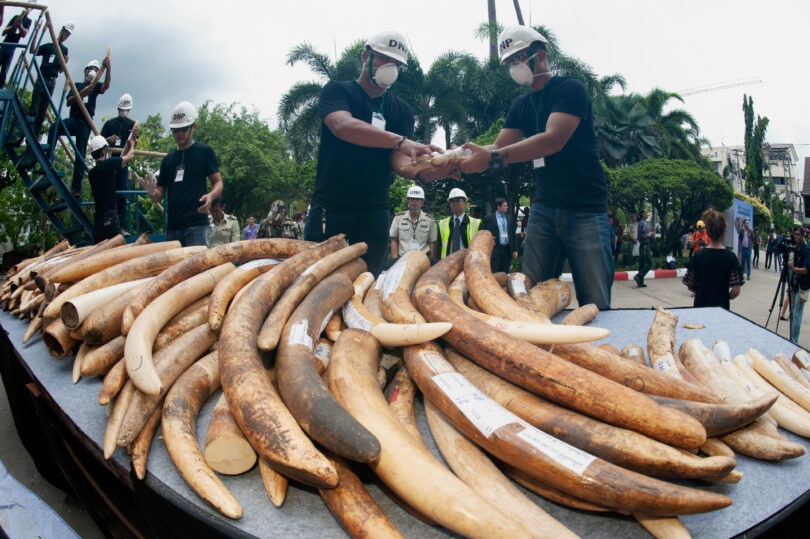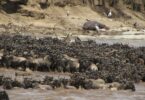Wildlife trafficking is one of the most devastating crimes happening globally, yet it often goes unnoticed. Millions of animals are captured, sold, and shipped across borders to meet the demand for exotic pets, traditional medicine, and luxury goods. This illegal trade doesn’t just threaten individual species—it disrupts ecosystems, causing lasting damage to our biodiversity.
The Scale of Wildlife Trafficking
Wildlife trafficking is a multi-billion-dollar industry, ranking as the fourth-largest illegal trade in the world, behind drugs, arms, and human trafficking. Every year, thousands of endangered animals are killed or captured for this illicit trade. For instance, over 35,000 elephants are killed annually for their tusks, while 1 million pangolins have been trafficked in just the past decade. The illegal trade isn’t limited to land animals; marine species like sea turtles and coral are also targeted.
This crime is deeply connected to organized crime syndicates. Traffickers often exploit weak law enforcement systems, working across international borders and using corruption to avoid detection. It’s not just the physical movement of animals; the trafficking of their body parts, like tusks, scales, fur, and bones, is widespread.
Impact on Biodiversity
Biodiversity refers to the variety of life on Earth and the interconnectedness of species within their ecosystems. Wildlife trafficking harms biodiversity in several ways. When key species, like elephants, rhinos, or tigers, are targeted, entire ecosystems suffer. For example, elephants play a crucial role in seed dispersal, and their loss can lead to the destruction of forests and grasslands. Similarly, the decline of apex predators like tigers can result in an overabundance of prey species, disturbing the balance of the ecosystem.
According to the International Union for Conservation of Nature (IUCN), over 1,300 species are critically endangered due to poaching and trafficking. These species are disappearing at an alarming rate, putting ecosystems at greater risk and threatening the survival of other species. The loss of biodiversity weakens ecosystems, making them more vulnerable to diseases and natural disasters.
Why Does Wildlife Trafficking Thrive?
The demand for exotic goods drives wildlife trafficking. In some cultures, animal parts are believed to have medicinal or magical properties. For example, rhino horn is wrongly thought to cure cancer, and tiger parts are used in traditional medicine. Exotic pets, such as parrots, reptiles, and primates, also fuel the trade.
Another reason wildlife trafficking persists is the weak enforcement of wildlife protection laws. While many countries have laws to protect endangered species, enforcement is often underfunded or poorly implemented. Traffickers take advantage of these weaknesses, operating with relative impunity. Interpol estimates that fewer than 10% of wildlife crimes are successfully prosecuted worldwide.
Corruption and lack of resources for monitoring wildlife trade also make it difficult to fight this crime. Some traffickers work with government officials or law enforcement officers to avoid detection. Furthermore, the networks behind wildlife trafficking often span multiple countries, creating challenges for coordinated international enforcement efforts.
How You Can Make a Difference
While wildlife trafficking may seem like an overwhelming issue, there are concrete actions you can take to help fight it:
- Support Wildlife Conservation Organizations: Many organizations are working hard to protect endangered species and combat illegal wildlife trade. Donating, volunteering, or supporting their campaigns makes a real difference. Organizations like World Wildlife Fund (WWF), TRAFFIC, and Wildlife Conservation Society (WCS) are on the front lines.
- Educate Yourself and Others: The more people understand wildlife trafficking, the better we can collectively fight it. Share information with your community and on social media about how trafficking harms wildlife and the environment.
- Make Informed Purchases: Always be mindful of what you buy. Never purchase items made from endangered species, like ivory, rhino horn, or exotic animal skins. While many countries have laws against selling these products, underground markets still thrive. Always research before you buy and support businesses that prioritize sustainability and ethics.
- Advocate for Stronger Laws and Enforcement: Push governments to implement and enforce stronger wildlife protection laws. Advocate for better monitoring systems and more resources for law enforcement. Sign petitions, write to your lawmakers, or support organizations that fight for wildlife protection policies.
- Support Ethical Tourism: When traveling, choose tours and activities that support conservation and respect for wildlife. Avoid parks or safari tours that exploit animals. Ethical wildlife tourism helps fund conservation efforts and creates jobs that benefit both wildlife and local communities.
- Participate in Citizen Science: There are ways you can help directly. Programs like iNaturalist and Zooniverse allow you to track wildlife, monitor populations, and report poaching activities.
A Call to Action
Wildlife trafficking is a silent crisis, but it doesn’t have to stay that way. The more we learn, the more we can do to protect endangered species and the ecosystems they sustain. By raising awareness, supporting conservation efforts, and pushing for stronger laws, we can all contribute to protecting the wildlife we cherish today for future generations.
Together, we can fight wildlife trafficking and protect our planet’s biodiversity from this ongoing threat. Every action counts in preserving our natural world.









